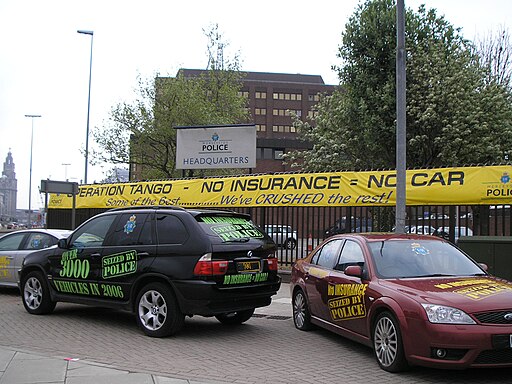Getting deemed a high risk driver by insurance companies can lead you to see a drastic increase in your car insurance rates. There are many factors that could drive up rates, from a dangerous occupation to a poor credit rating. However, one of the main factors is your driving record. If you have been in at-fault accidents, you can expect your rates to go up as a result. Even those who have received speeding tickets or been in not-at-fault accidents could have a tough time finding affordable insurance. Car accidents and speeding tickets suggest reckless driving to insurance companies. So what you can you do if your driving history is less-than-perfect?
Image Source: Nick-D/Wikimedia Commons
Use Comparison Websites
No matter what your driving record looks like, using comparison websites is a good idea. You can submit some basic details and receive quotes from several different insurance companies, many of which may specialize in high risk insurance policies. Be sure to use more than one comparison website, because some have special deals with certain companies and you want to receive the full range of options to peruse.
Take a Safe Driving Course
Another option is to take a defensive driving course. Completion of driving safety courses has been shown to statistically reduce your chances of getting in a future accident, which insurers like to see. They may be willing to cut your rates as an incentive.
Install a “Black Box”
Telematics or “black box” policies provide the opportunity to be judged by your current driving habits, rather than defined by your past. To qualify for this type of policy, you’ll need to agree to plug a small electronic device into your car. This records your speed and braking habits along with where and when you drive your car, transmitting it back to the insurance company for analysis. You can learn more about how it works here, but in a nutshell this is a way for the insurance company to monitor your actions and reward you for safe driving with lower rates. As a bonus, many black boxes also protect against car theft by sending location data when your car is reported stolen.
Increase your Deductible
Reassure insurance companies by assuming greater risk yourself. You can do this by increasing your deductible amount, which makes you liable to pay for a higher portion of the damage should you find yourself in an accident. One thing to note if you choose this option is that it’s a good idea to put some of the money you save on premiums away in an emergency fund to cover repairs.
Reduce Level of Coverage
Finally, you can reduce your insurance costs by decreasing coverage. Whether or not this will work for you depends on your lifestyle and the type of car you drive. If you drive an old car, or have already paid off your auto loan, you probably don’t need extensive comprehensive coverage.
When you’ve been caught in a few fender benders in the past, it may feel as though you have very few options. However, these are all ways to reduce your car insurance rates no matter what your record looks like.
*This is a sponsored post.
